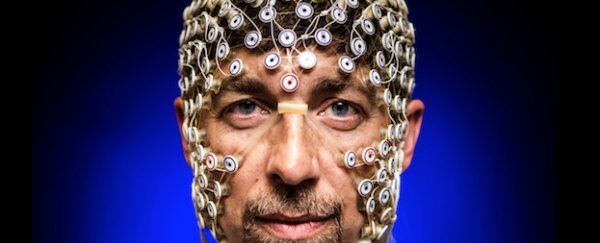No matter how real your daydreams might seem, to your brain they're distinctly different to reality, new research has shown.
In fact, the electrical signals that send messages through your brain travel in the opposite direction when you're imagining a scene rather than watching it, the study by University of Wisconsin-Madison researchers in the US suggests.
To map this activity, the research team measured the flow of this neural information by hooking participants up to electroencephalography (EEG) machines - non-invasive sensors on the scalp that monitor the electrical activity of the brain below. They then asked one group to watch a short video clip before replaying it in their heads using their imaginations.
A second group was asked to first imagine travelling on a magic bicycle and focus in on all the textural details before they were shown a short video of silent nature scenes.
Researchers already knew that different regions of the brain work together in order to perform tasks, but it's something that's still very poorly understood.
"A really important problem in brain research is understanding how different parts of the brain are functionally connected. What areas are interacting? What is the direction of communication?" said electrical and computer engineer Barry Van Veen, the lead researcher, in a press release.
"We know that the brain does not function as a set of independent areas, but as a network of specialised areas that collaborate."
What his team found was that, during imagination, the electrical signals were moving from the parietal lobe of the brain to the occipital lobe. The parietal lobe is a higher-order brain region, which means it combines inputs from several senses, such as touch and sound, and processes them at the same time. Whereas the occipital lobe is a lower-order region, and is associated with interpreting visual information directly.
But in contrast, when the participants were actually watching the clips, the information came in via the occipital lobe and then flowed "up" to the parietal lobe. The study was the first of its kind, and the results have been published in the journal NeuroImage.
"There seems to be a lot in our brains and animal brains that is directional, that neural signals move in a particular direction, then stop, and start somewhere else," said Van Veen. "I think this is really a new theme that had not been explored."
This is also the first time that EEG machines have been used to reliably show the directional flow of information in the brain. The tool could now be used to teach us a lot more about how our brain works together to encode short-term memories, as well as unravel mysterious processes such as what happens during sleep and dreaming.
Source: ScienceDaily
